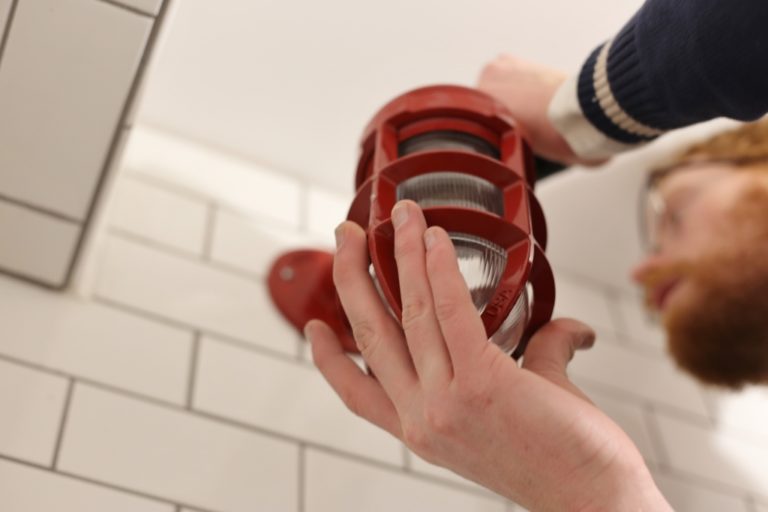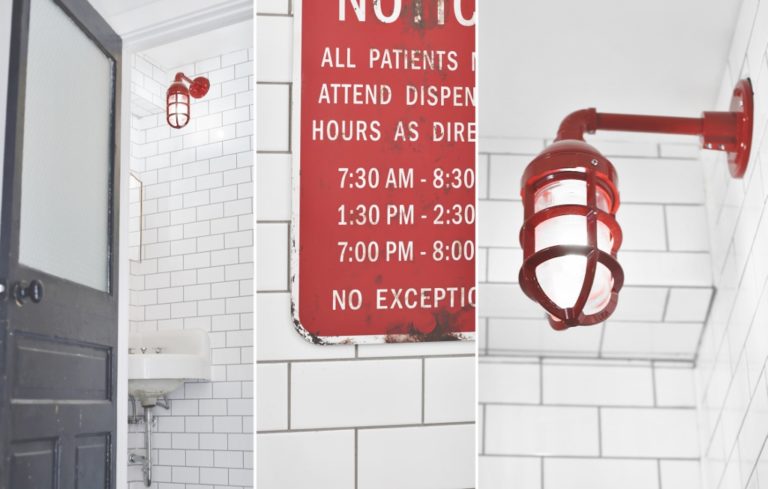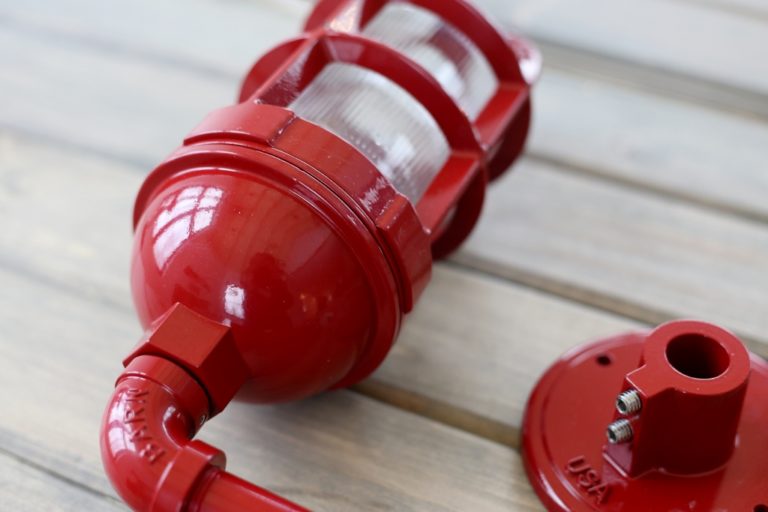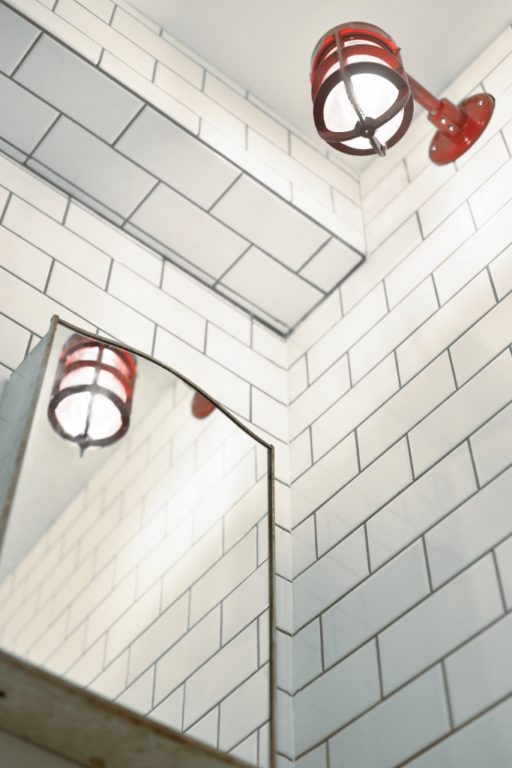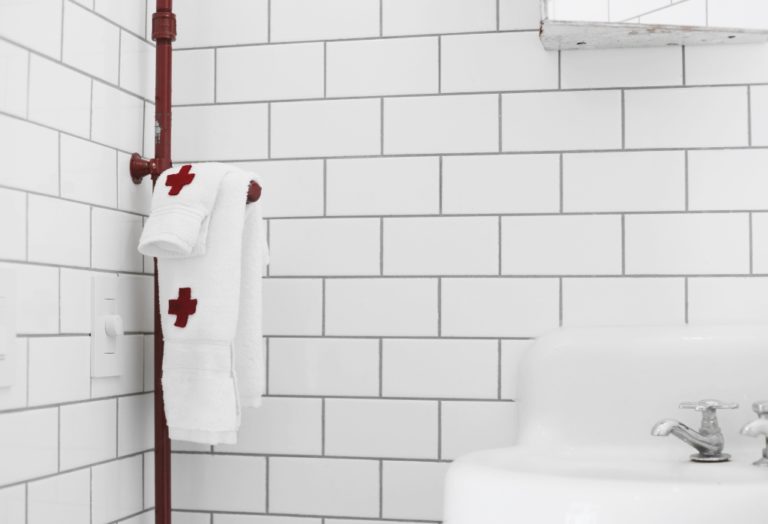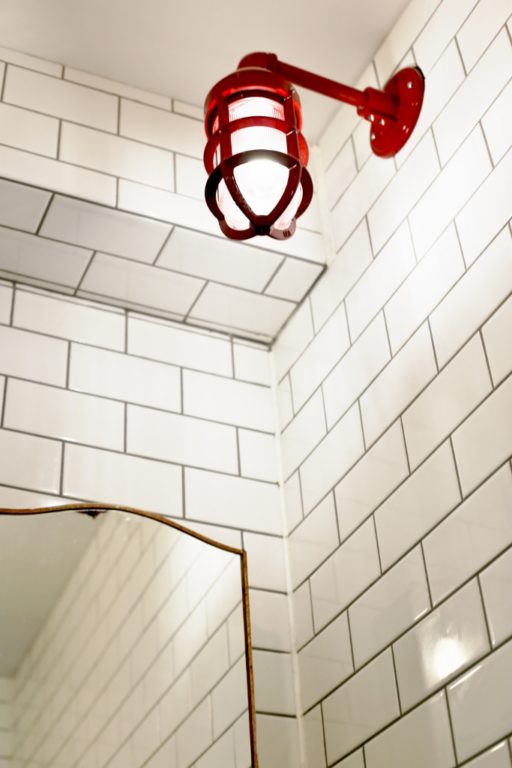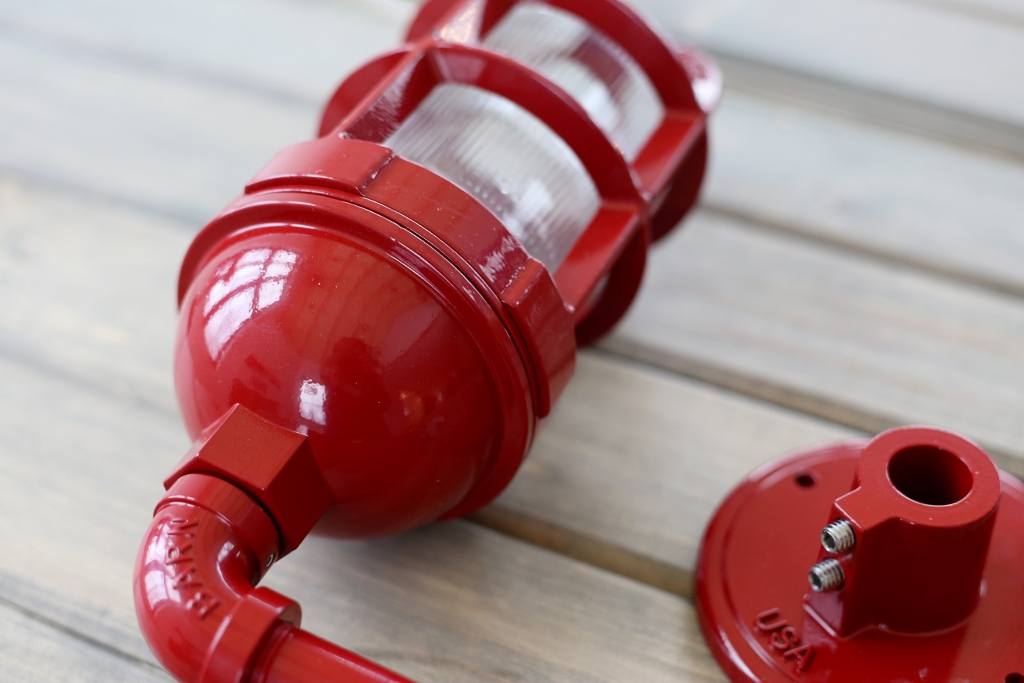
Modern Farmhouse Journey | The Power of Color Temperature
Last April, we introduced Whitney in this blog post as she began sharing her story of building a mid century modern farmhouse in Vermont. Today, Whitney discusses a powerful lesson learned about color and lighting in her new powder room.
As my husband, Peter, and I dove into the construction of our mountain-top farmhouse, we faced steep learning curves along the way. We discovered that a clear vision for layout and décor is no guarantee when it comes to what materials arrive on your doorstep. Even with countless hours of research, endless Pinterest board comparisons, Houzz inspiration hunting, and precise planning, you just can’t foresee everything until the project unfolds in front of you.
Case in point: our entryway powder room — my most prized room of the entire house. I like to call the design “1960’s infirmary chic” if that isn’t oxymoronic enough. Similar to the medical facilities of that era, I was looking to achieve a cold, institutional, and sterile feel punctuated by vintage hospital-red accents.
It came together with an antique chicken wire glass door, 1930’s cast iron corner sink, antique medicine cabinet, exposed piping, and a weathered pharmacy sign.
The pièce de résistance is our light fixture: an industrial, metal-caged safety light in Barn Red from Barn Light Electric. The Atomic Topless Industrial Guard Sconce is the celebrity accent that legitimizes the theme and captures our guests’ attention. So that was easy, right? Wrong!
After my husband expertly tiled the entire space, floor to ceiling, with “true white” tile, I realized that the white was way (way!) too warm for the clinical look we intended. Not wanting to rip out the tiles and start over, I wondered, albeit with dread in my heart, whether we could paint the tile instead.
Luckily, my husband is well versed in electrical lighting design and suggested we use color temperature to resolve this tiling debacle. Yes, you can use light to change the color of your tiles! Because the powder room is windowless, the light bulb’s color temperature can be used to influence what shade of white your eyes see when it’s turned on.
White lacks any one specific pigment and will reflect whatever color you shine on it. Days later, a Phillips Hue White Ambiance E26 LED bulb arrived and was promptly placed in our beautiful industrial wall sconce.
This bulb ranges from warm light to daylight based on the Kelvin setting you choose, so we went with the coolest daylight hue available. The cold, icy hue turned my off-white tile into a subtly bluer shade of arctic white – all without laying a paintbrush to a single tile!
Using lighting to change color, depth perception, and mood of any space is a cheap and easy solution to keep in mind for many spaces. We applied the same concept to the exterior lights of our home which I’ll cover in my next post. Our before-and-after pics will demonstrate how we used the power of color temperature to create a warm and inviting look for the exterior of our home.
Whitney May is a Digital Marketing & Social Media Manager from New York City now living the mountain life in Vermont. Follow her progress on the farmhouse on Instagram @midcenturymodernfarmhouse
